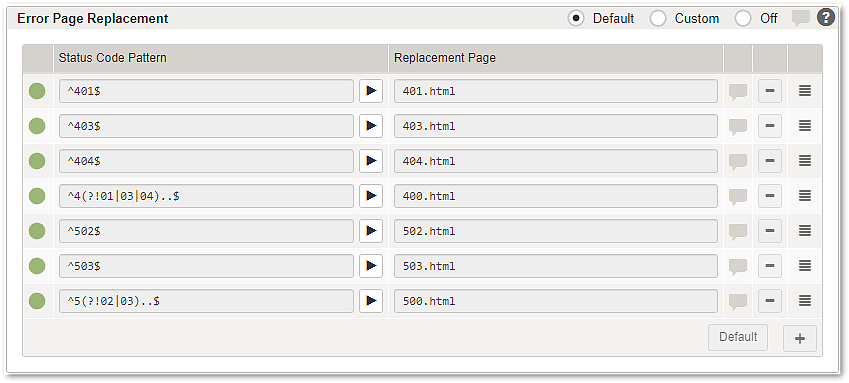
Depending on the HTTP status code of a back-end response, Airlock Gateway error pages are delivered to the client with a set of default replacement rules.
- The screenshot shows the default rules for error page replacements enabled:
- The first rule that applies when checking from top to bottom is used.
- For example, a page with HTTP state
408is replaced by400.htmlby the default rule^4(?!01|03|04)..$. - If no pattern matches, the error page is not replaced by Airlock Gateway, but the original error page of the back-end application is used (not recommended, see warning below).
Error pages generated by back-end applications may leak internal information about a system's setup and configuration (e.g. platform, system paths, stack traces, or deployed frameworks). Such information is valuable for potential attackers.
To prevent information leakage by default, Airlock Gateway replaces error pages generated by back-ends or ICAP services used in Back-end View.
If you disable error page replacement or configure replacement rules accordingly, the error pages of the back-ends will be displayed instead.
The replacement pages may contain .asis responses.
- Buttons and radio buttons:
- Default (radio button) – enable the radio button to activate the set of standard Airlock Gateway replacement rules.
- Custom – enable the radio button to create custom error page replacement rules.
- Off – enable the radio button to disable the replacement of error pages (not recommended, see warning above).
- Default (button at the bottom) – Use this button in conjunction with the Custom radio button to add the default Airlock Gateway replacement rules to the Custom rules table. Click multiple times to add more than one set of default replacement rules to the table.